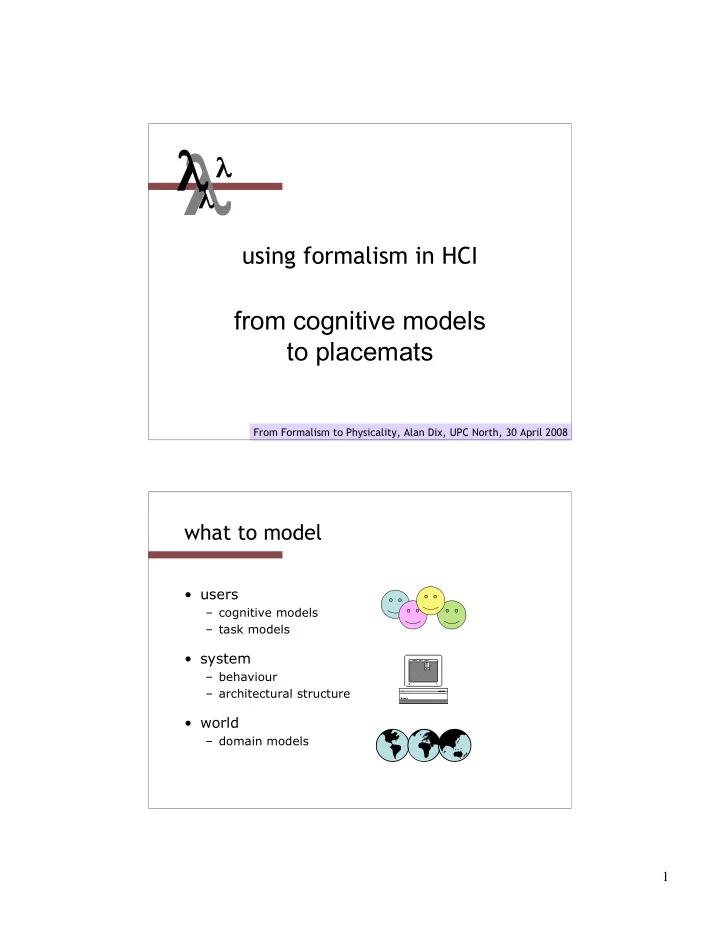

� � � � using formalism in HCI from cognitive models to placemats From Formalism to Physicality, Alan Dix, UPC North, 30 April 2008 what to model • users – cognitive models – task models • system – behaviour – architectural structure • world ��� – domain models 1
notations • graphical – digital watch STNs, Petri Nets, CTT, UML • textual – production rules (used in UIMS and cog. models) – mathematical formulae, process algebras • plain old sums – back of the envelope/placemat calculations placemat math - menu sizes • on-screen menus – e.g. web site navigation • how many items per screen? • frequent misapplication of Miller 7±2 • but how many is right? 2
placemat math (ii) • menu tree has N items • number of items per screen = M (breadth) • depth (d) = log 2 (N) / log 2 (M) xxxx breadth (M) yyyy zzzzz . . . xxxx xxxx xxxx xxxx xxxx depth yyyy yyyy yyyy yyyy yyyy zzzzz zzzzz zzzzz zzzzz zzzzz (d) . . . xxxx xxxx xxxx xxxx xxxx yyyy yyyy yyyy yyyy yyyy zzzzz zzzzz zzzzz zzzzz zzzzz . . . placemat math (iii) T total – time to find an item = ( T display + T select ) � d T display – time to display screen (fixed) T select – time to select menu item = A + B log(M) (Fitts’ Law) T total = ( T display + A + B log(M) ) � log(N) / log(M) cancel = ( ( T display + A ) � log(N) ) / log(M) + B log(N) 3
best menu size? T total =( ( T display + A ) � log(N) ) / log(M) + B log(N) – larger M means shorter total time – the bigger the better! N.B. other factors – visual search (linear if not expert) – error rates – minimum selectable size – effective organisation of menu items what to model • users – cognitive models – task models • system – behaviour – architectural structure • world ��� – domain models 4
what to model • users – cognitive models – task models • system – behaviour – architectural structure • world – domain models types of system model • dialogue – main modes specific system • full state definition generic • abstract interaction model issues 5
Recommend
More recommend